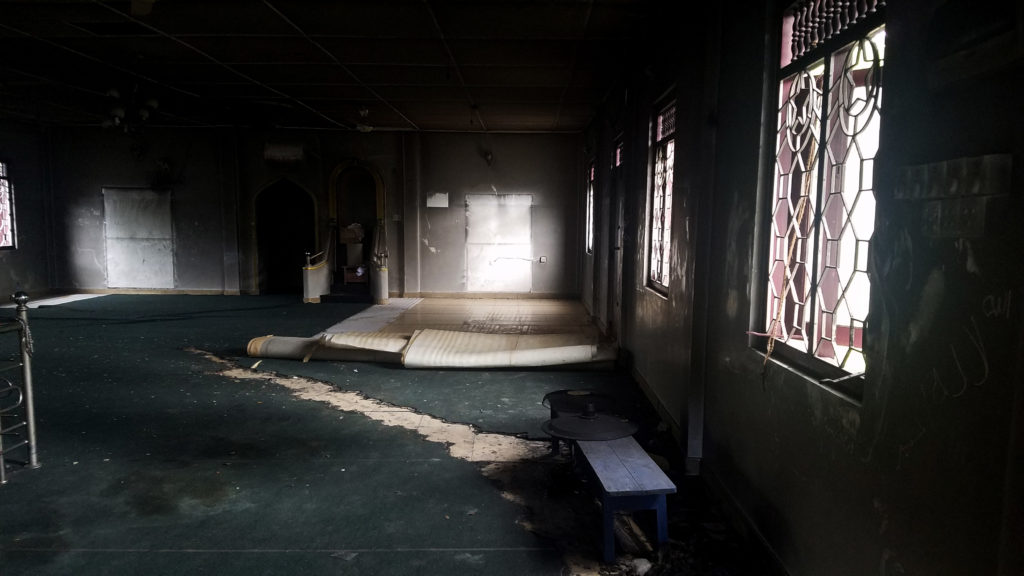Editor’s Note: These are excerpts from a long-form story on the experiences and reflections of Muslim families in Akurana, Ambatenne, Pallekele, Digana and Katugastota, three months after a series of violent attacks against their communities. Groundviews visited these areas in the first week of June 2018.
Individuals whose homes and businesses were damaged by Sinhala-Buddhist extremist mobs spoke with increasing frustration of the inadequate State response to the violence. They also outlined the probable causes that would motivate these groups to wreak this violence.
In order to ensure attention to key issues, we are publishing each as an excerpt.
‘For three years, they have been putting up these posters, telling people not to go to our shops’ said Nizar. They were not pasted on his shop, he says, but in public spaces a few kilometres up the road. The posters carried all the usual missives – around sterilisation pills, a supposed ‘takeover’ of the country leading to the ultimate downfall of the Sinhalese. He says he got in touch with the CID at the time. They visited the area to take some pictures of the posters and left. He hasn’t heard from them since.
‘It was good that they blocked Facebook during those days’, says Nusra. People were already in a tense situation, she says, and the messages were only making them more panicked. They could still make calls if necessary, and she feels that was adequate at the time.
In addition, she notes that misinformation was spreading about how the Muslim communities were responding to the attack. ‘A post that was circulating said a monk had been killed by a group of Muslims, and this was spreading fast’. She says it wasn’t until a new video featuring the same monk was aired on television that people realised it had been false news. ‘Anyway, those who needed to still found a way around the block, didn’t they?’ she asks.
‘After suspected perpetrators of the hate speech and violence were arrested, a well- known mainstream TV station visited their families, spoke to their wives, who lamented that was no breadwinner in the house, filmed their small children, made people feel sad for them’ says Uwais. However, no effort was made to speak to the people who were actively targeted by the mob, the victims left with their homes or businesses in ashes.
He is unsatisfied how the mainstream media, through words such as ‘inter- communal’, imply that the Muslim community actively played a role in the riots. ‘They are making it seem like there were clashes between two sides, when they actually attacked us!’ he says, indignantly.
Read the full story here.
